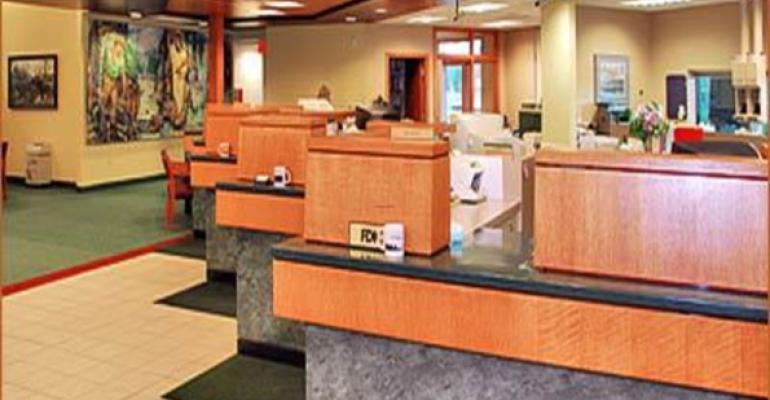Healthcare clinics and co-working facilities may soon find new homes in closed bank branches.
Bank branch inventory in the U.S. has decreased by about two percent each year over the past two years, according to real estate services firm JLL. From 2016 to 2018, 5,700 branches closed across the country, and forecasts call for another approximately 1,700 bank branches to close this year.
Banks are shrinking their physical footprints because of their focus on omni-channel strategies to connect with customers, not because of inherent problems with their retail branches. Despite bank closures, total deposits increased by 3.8 percent last year because of, in part, the growth of mobile and online banking. For this reason, banks remain in a healthy position, according to Christian Beaudoin, research and strategy managing director at JLL, a real estate services firm.
“There are opportunities for online banking that didn’t exist five or 10 years ago, so now, people can conduct regular transactional business, deposits and direct bill payment, online, rather than having to go to a branch to do so,” says Beaudoin. “Banks are in a healthy position because they have entered the omni-channel world, where sometimes you need a physical presence, sometimes you need an online presence, sometimes you need a mobile presence, and they’re working through all those channels.”
But amid banks shrinking their physical footprints, landlords see an opportunity to reuse the space. According to Beaudoin, retail healthcare facilities and alternative users like co-working operators may be able to move into closed bank spaces.
The $3.5 trillion U.S. healthcare industry is estimated to grow by over 70 percent to around $6 trillion by 2027. Only 10 percent of U.S. shopping centers have a healthcare-related tenant, though that is expected to nearly double by 2022, according to JLL.
Clinics benefit from highly visible locations, convenient parking and proximity to growing neighborhoods—attributes many bank branches possess.
“Bank branches had earlier been located in areas of demographic growth and in the path of strong retail locations,” says Beaudoin. “If there are multiple banks in such a cluster, bank owners may choose to close such a branch, but that location could still be good for other uses.”
Retail landlords benefit from a healthcare tenant because medical service providers usually sign longer leases, compared to traditional retail tenants. Medical leases tend to be long-term because of the high cost of relocating equipment. Physician and hospital groups often have higher credit ratings as well, compared to traditional retailers, according to JLL.
Healthcare providers can also boost foot traffic and sales growth for surrounding retail tenants, as the influx of patients and physicians raises demand for the center’s restaurants and stores, JLL researchers note.
Besides healthcare clinics, co-working offices are often well-positioned to succeed in former bank branch locations.
Co-working operators tend to focus on high wage markets and cities with a large concentration of professional services firms, especially tech-heavy areas, according to real estate services firm Colliers International. Last year, the amount of co-working space in the U.S. rose by 16 percent and is forecasted to grow by another 6 percent between 2018 and 2022.
Primary markets saw a reduction in the number of their bank branches of 1.6 percent between 2017 to 2018, while secondary markets experienced a reduction of 1.9 percent.
“These closures have certainly impacted the retail commercial real estate markets, they have contributed to some of the vacancy challenges in traditional retail real estate,” says Beaudoin. “However, they have also created opportunities for creative landlords and they have also attracted some new tenants and retail concepts to the market.”




